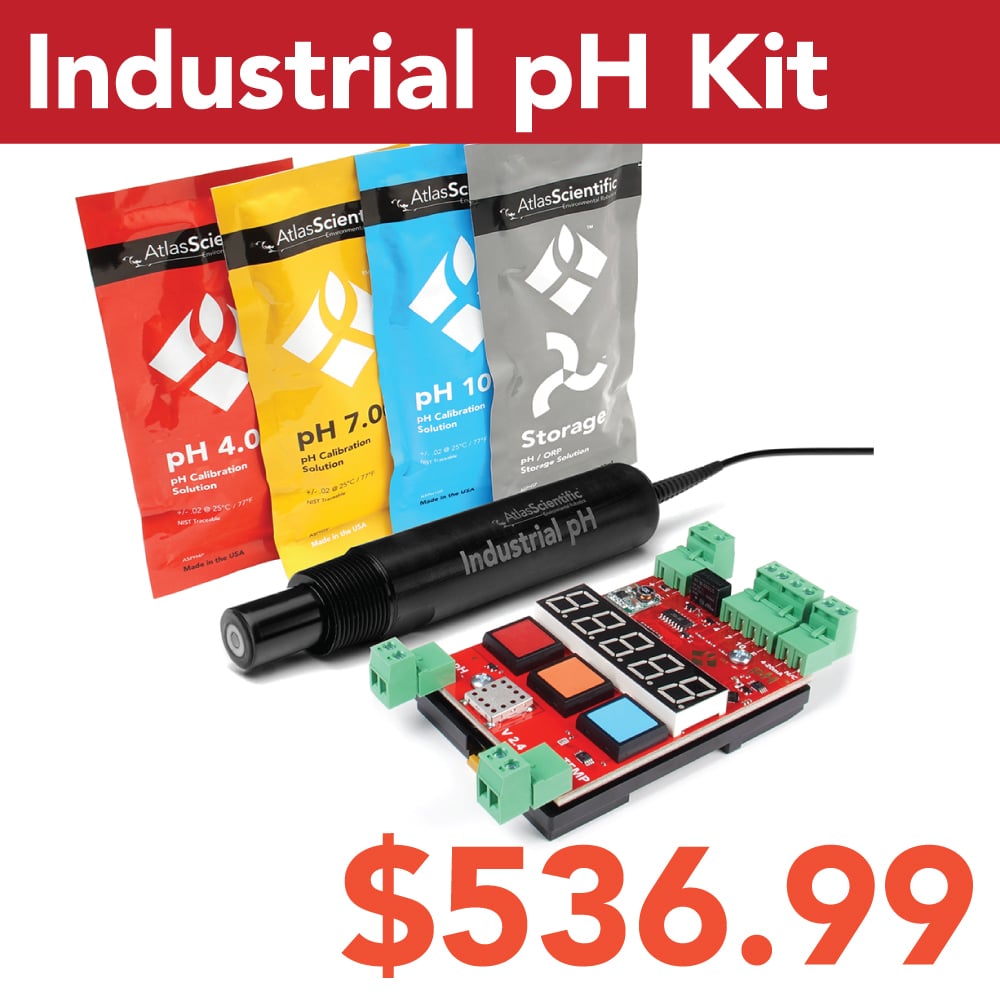pH probes, or pH meters, are very useful tools in quickly identifying the pH of a sample. This statement often overlooks how to calibrate a pH meter, since a pH meter without calibration is practically useless. But what if typical calibration techniques and solutions are not available? This post will analyze how to calibrate a pH meter without solution and the possibilities that arise from this situation.
What are the basics of pH and pH calibration?
pH measures the concentration of the hydrogen ions in a water-based solution and defines the words acid and base. A solution with a high concentration of ions is an acid, and will have a pH value lower than neutral 7. Since the scale runs from 0 to 14, the opposite is true for bases which have a pH value higher than 7. To put this into perspective, water is a neutral 7 on the pH scale, whereas coffee and bleach have pH values of around 5 (acidic) and 9 (basic), respectively.
Since pH meters are measuring this ion concentration, they need a reference point like a bathroom scale needs to be zeroed. In a normal scenario, one will have a pre-made, or lab produced, calibration solution to perform multiple two and three-point calibration runs, depending on the level of accuracy that is required. Typical calibration solutions will run at values of 4, 7, and 10 on the pH scale to give a proper range for incorporating most common test samples. In any case, this calibration step is critical to performing a robust pH test on any given sample.
What if I run out of calibration solution?
For starters, most pH meters are stored in a solution that is usually neutral in pH, like an electrolyte solution of neutral salts. Theoretically, one point on the calibration curve is already accounted for but it’s best practice to use two or three different points for calibration, as in two or three other calibration solutions.
Anyways, in the first case of running out of calibration solution, there is potential to create your own buffer solution only if you have a calibrated probe on hand. If the probe is not calibrated there will be no way of knowing for certain the pH of these home remedies.
That being said, if you have a calibrated probe and a little more DIY gumption, these buffer/calibration solutions can be made with water and various chemicals like KOH (mono potassium phosphate, pH of around 7) and citric acid (pH of around 4) to name a few. It requires a bit of research to know your target pH solution, and then some trial and error with a calibrated probe in water, slowly adding chemicals to reach a desired pH level. But it can be done to create the common buffer solutions with a pH of 4, 7, and 10.
Just ensure these homemade solutions are retested over time and stored in dark spaces and bottles to prevent degradation. In the long run, this can be a more cost effective approach; but increasingly more effort is required to create a solution that will yield much higher uncertainty in pH than a high-quality calibration solution.
What if I don’t have any calibration solution?
Similar to the last case, if your pH meter is not calibrated and no calibration solution is available you cannot accurately calibrate and measure the pH meter. This may come as an inconvenience, but it is not recommended to attempt calibration on common-household goods like bleach due to the potential damages on the pH meter electrode and housing from long exposures.
To add, keep in mind that these pH probes and meters should not be allowed to dry out and proper storage solutions should be used. If you run out of this storage solution do not store the pH meter in tap water or DI water as this can cause unwanted diffusion and damage your pH meter.
If all this seems overwhelming try starting out with simple pH test strips that give generic pH readings based on a color scale. Or better yet, grab yourself a pH test kit that will have everything you need to start measuring pH, including calibration and storage solutions so you can rest easy.
Buy pre-made calibration solutions
To summarize, pH meters are very useful tools in quickly measuring the pH of water and soil in consumer to industrial applications. The most important step in these tests, however, is ensuring a proper calibration of these probes. Calibration must be performed with known pH solutions called buffer or calibration solutions, and the pH meter needs at least two points (three is recommended) for accurate calibration.
The crux of this wonderful scenario is what if no calibration solution is available? Well, if you have an already calibrated pH meter it is possible to create homemade calibration solutions with water and various chemicals through. This approach will be cheaper in the long run but much more difficult to achieve accurate pH solutions that don’t readily degrade over time.
On the other hand, if no calibration solution is available and the pH meter is not calibrated, you will need to go and purchase some calibration solutions to begin proper calibration and testing. These pre-made calibration solutions will ensure the most accurate readings of your pH meter and create a much more convenient approach.
If you are unsure exactly what solutions and pH devices will best suit your needs, do not hesitate to reach out to the world-class team at Atlas Scientific.
pH Probe Calibration Solutions














